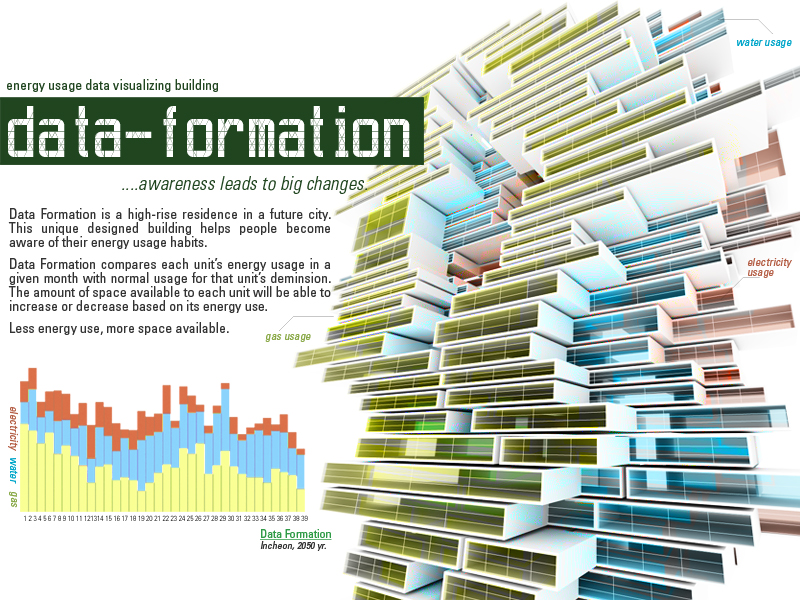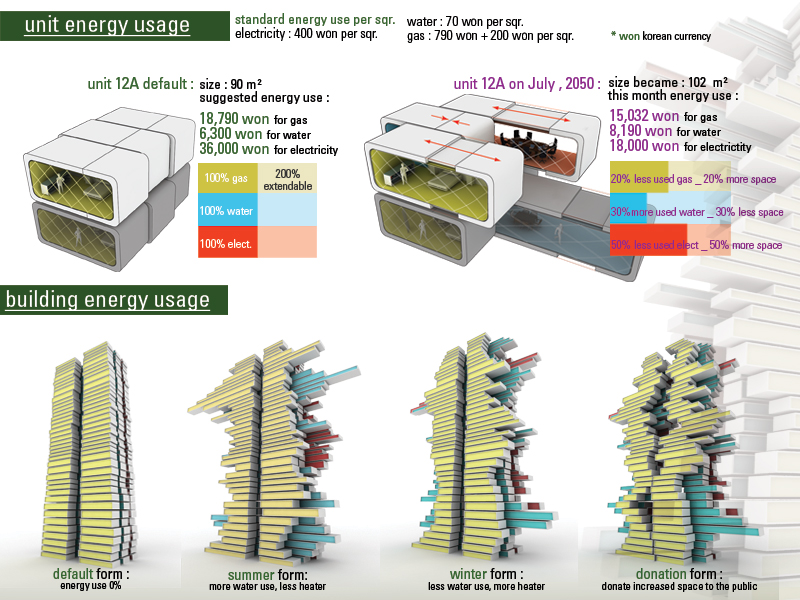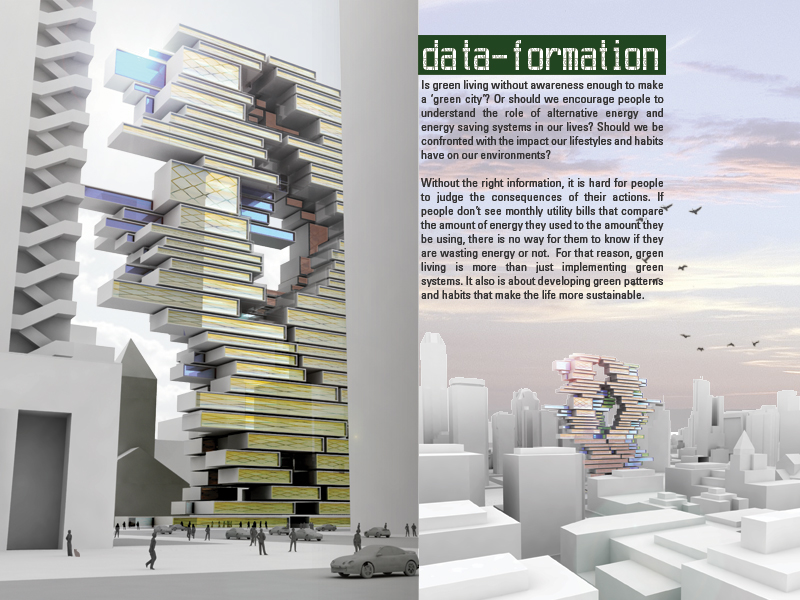
data formation by randomwalks randomwalks from usa
designer's own words:
Full awareness of our present situation would lead to big changes.
The city is a very complex place at where politics, the economy, and society are entangled in various ways. Social issues and phenomenon appear in the city in diverse forms. The architecture of buildings is one of the main components of the city, and many issues are reflected on the way buildings are structured and designed. Protecting the environment is a very important concern.
Architects consider the environment when they construct new buildings, alternative energy systems are applied to the buildings, and water conservation systems purify rainwater for drinking.
People living in such buildings make less of an impact on the environment than people who live in other buildings, but they might not realize it. Is green living without awareness enough to make a ‘green city’? Or should we encourage people to understand the role of alternative energy and energy saving systems in our lives? Should we be confronted with the impact our lifestyles and habits have on our environments?
Without the right information, it is hard for people to judge the consequences of their actions. If people don’t see monthly utility bills that compare the amount of energy they used to the amount they be using, there is no way for them to know if they are wasting energy or not. For that reason, green living is more than just implementing green systems. It also is about developing green patterns and habits that make the life more sustainable.
Data Formation is a high-rise residence in a future city. This unique designed building not only includes many energy saving systems, but it also helps people become aware of their energy usage habits. Data Formation keeps tracking each unit’s energy usage and compares it with normal usage for that unit’s dimensions. The amount of space available to each unit will be able to increase or decrease based on its energy use. People could let their space be extended or they can donate the increased space to the public of the building by their decision. The package of these donated spaces from the each unit becomes architectural green-zone, which will be a public park in the building.
For example, if unit 12A occupies 60 square meters, then its suggested electricity would be 10,890 Korean won in a given month. If the unit consumed 10% less energy, it would extend its space by 10%. However, if the unit used too much energy, its space would be reduced accordingly.
Such direct results on people’s lives would make them aware of their habits and make them think about their energy usage in a very dramatic way. Data Formation is a building that does not just depict the resident’s energy usage as abstract information, but it affects their physical space. This will help to develop a real green city, where people have a clear understanding of their environmental impact and consciously act to incorporate green habits in their lives.
dataFormation_page01
 dataFormation_page02
dataFormation_page02
 dataFormation_page03
dataFormation_page03